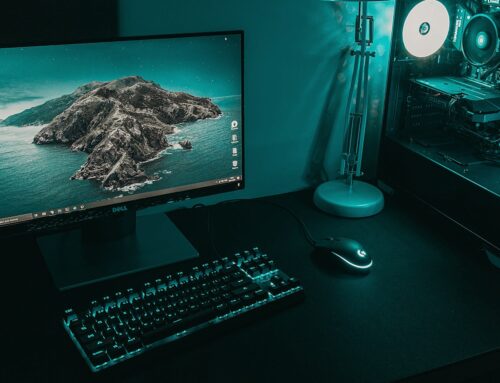Dealing with laptop screen problems can be frustrating, especially when you rely on your laptop for work or personal tasks. Screen issues are among the most common problems users face, and they can range from minor annoyances like flickering to more serious issues like a completely black screen. But don’t worry; many of these problems can be fixed right at home with some troubleshooting steps.
First, understanding the root cause of the screen problem is essential. Sometimes the issue is with the software, such as outdated drivers or incorrect display settings. Other times, the problem might be hardware-related, like a faulty screen or a loose connection inside the laptop. Identifying the cause helps you apply the correct solution without wasting time on unnecessary fixes.
One of the most frequent screen issues is flickering, which can make it difficult to focus on the laptop screen. Dead pixels and display artefacts like weird lines or colours are also common. These problems can disrupt your work and make your laptop seem less reliable. Fortunately, addressing these issues usually involves straightforward procedures that anyone can follow.
In the following sections, we’ll explore how to identify and fix these common laptop screen issues. By following these steps, you can often resolve the problem yourself and get your laptop back to working order without needing professional help right away.
Identifying Common Laptop Screen Issues
Before diving into fixes, it’s crucial to identify the specific problem with your laptop screen. Common issues include flickering, dead pixels, black screens, and display artefacts like strange lines or colours. To identify the issue, start by observing your screen closely. Note any unusual behaviour such as intermittent flashing, lines running across the screen, or areas that remain permanently black or discoloured.
Sometimes the issue is with the software. Check if your display settings are correctly configured and if your graphics drivers are up to date. Go to your laptop’s settings and examine the display options. Outdated or corrupted drivers can cause several display problems, so ensuring they are current can often resolve these issues.
If the problem persists after checking the software, it might be hardware-related. Inspect the screen’s physical condition for any signs of damage like cracks or discolouration. Also, consider the laptop’s age. Older laptops might have loose connections or worn-out components. Identifying whether the issue is software-based or hardware-based helps you decide the next steps and whether you can resolve the problem at home or need professional assistance.
Troubleshooting Screen Flickering or Glitches
Screen flickering and glitches can make using your laptop a headache. This issue is often caused by outdated graphics drivers or incompatible display settings. Here’s how to troubleshoot:
1. Update Graphics Drivers: Go to the manufacturer’s website and download the latest drivers for your laptop’s graphics card. Installing the latest drivers can fix many display issues as they include updates and patches for known problems.
2. Reset Display Settings: Navigate to your laptop’s display settings and reset them to default. Sometimes, incorrect settings can cause flickering. Adjust the screen resolution and refresh rate to match the recommended settings for your laptop.
3. Check Cables and Connections: If you’re using an external monitor, ensure all cables are securely connected. Loose or damaged cables can cause screen flickering. Replacing a faulty cable might solve the problem.
4. Examine External Devices: Disconnect any external devices like USB drives or peripherals that might interfere with the display. Reconnect them one by one to identify if any particular device is causing the issue.
5. Power Cycle Your Laptop: Turn off your laptop, unplug it, and remove the battery if possible. Press and hold the power button for 15-20 seconds to discharge any residual power. Reconnect and power on your laptop to see if the problem persists.
By following these steps, you can often pinpoint and resolve the cause of screen flickering or glitches. If none of these solutions work, there might be a deeper hardware issue requiring professional repair.
Fixing Dead Pixels and Display Artefacts
Dead pixels and display artefacts can be incredibly distracting and annoying. Dead pixels are single points on the screen that remain black or unresponsive, while display artefacts can include lines, colours, or shapes that shouldn’t be there. Fortunately, there are a few methods you can try to fix these issues.
1. Pixel Repair Software: There are various software solutions designed to fix dead pixels. These programs flash multiple colours rapidly over the affected area, which can sometimes jolt the dead pixel back to life. Download a trusted pixel repair tool and follow the instructions to see if it resolves the issue.
2. Gentle Pressure Method: Turn off your laptop and use a soft cloth to gently press on the area around the dead pixel. Apply light pressure and hold it for a few seconds before releasing. Turn your laptop back on to check if the pixel has been reactivated.
3. Check for Display Artefacts: Ensure your graphics drivers are up to date, as outdated drivers can cause display artefacts. Sometimes, artefacts are caused by overheating. Make sure your laptop’s cooling system is functioning correctly and clean any dust from the vents and fans.
4. Test with External Monitor: Connect your laptop to an external monitor. If the artefacts appear on the external display, the issue might be with your laptop’s graphics card rather than the screen itself. In this case, professional repair might be necessary.
Addressing Dim or Black Screens
Dim or completely black screens can be one of the most frustrating issues to deal with. Several potential causes could be behind this problem, from simple settings adjustments to more serious hardware failures. Here are steps you can take to diagnose and fix dim or black screens:
1. Adjust Brightness Settings: Check if your laptop’s brightness settings are accidentally turned down. Use the function keys on your keyboard to increase the brightness. Alternatively, go into your system settings and manually adjust the brightness level.
2. Check Power Supply: Ensure that your laptop is properly charged or connected to a power source. Sometimes a low battery can cause the screen to go dim or black. Verify that the power adapter is working correctly and try using a different power outlet.
3. Restart Your Laptop: Sometimes a simple restart can resolve screen issues. Turn off your laptop completely, wait a few moments, and then power it back on. This can reset the display settings and potentially fix the issue.
4. External Monitor Test: If your screen is black but you still hear the laptop running, connect it to an external monitor. If the external monitor works, the problem likely lies with your laptop screen or its connections, possibly a loose or damaged cable.
5. Inverter or Backlight Issues: For dim screens, the fault may lie with the backlight or inverter. This can be more serious and often requires professional repair. If you’re comfortable, you can try opening the laptop to check for loose connections, but be cautious as this can void warranties.
Conclusion
Laptop screen issues can range from minor annoyances to major problems that disrupt your daily activities. Identifying the specific issue is the first step towards finding a solution. Whether it’s flickering, dead pixels, display artefacts, or a dim or black screen, troubleshooting these problems can often be done at home with the right know-how and tools.
Timely intervention and regular maintenance can extend the life of your laptop screen and ensure that your device functions smoothly. From updating drivers and adjusting settings to using repair tools and checking hardware, there are multiple ways to address common screen issues effectively.
If you’re unable to fix the problem yourself or need professional assistance, Forest City Computer Repairs in London is here to help. Our expert technicians can diagnose and repair your laptop screen issues, ensuring your device is back to optimal performance. Contact Forest City Computer Repairs today for reliable and efficient laptop repair in London.







